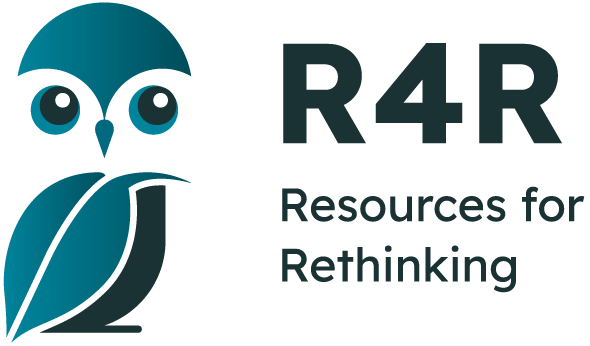- Home
- Tutorial
- Resource Guides
- Focus Areas
- LSF Programs
-
Professional
Development - Review Process
-
A project of LSF

Search for Resources
Description
The video explores the chain of cause and effect that links climate change to a loss of biodiversity and concludes with an outline of possible responses aimed at mitigating this effect.
The link between cause (climate change) and effect (loss of biodiversity) is illustrated with a number of examples. The warming of polar regions for example, threatens the habitat on which polar bears and caribou depend and this in turn impacts the food source of northern peoples. The subsequent rise in sea levels and water temperatures has consequences for coral reefs and the delicate ecosystems of small islands and the plants and animals adapted to these habitats. Other examples emerge as the video examines the current and possible future effects of increased droughts and flooding on what grows where and on the ecosystem services required by all life on Earth.
Having outlined the current and projected consequences of climate change, the video turns to an examination of what may be done to adapt to or mitigate these effects, so that biodiversity remains a resource to communities that are adjusting to climate change. Possible responses include maintaining refugees, creating buffer zones and corridors, and introducing plant varieties. The video concludes with a recognition of the need for various government agencies to work together to better ensure what can be done will be done.
General Assessment
Recommendation of how and where to use it
Biodiversity and Climate Change has particular relevance for the unit on Sustaining Ecosystems that is found in almost all grade 10 Science curricula. It initiates a conversation about the impact of climate change on ecosystems and the biological diversity therein. It also has relevance for those units that deal more generally with the consequences of climate change and possible responses to the associated challenges .
The video is an effective tool in introducing the parameters of that conversation and in identifying those topics or issues that students should pursue in greater depth using other resources available from R4R.
Relevant Curriculum Units
The following tool will allow you to explore the relevant curriculum matches for this resource. To start, select a province listed below.
- Step 1Select a province
- British Columbia
- Step 2Select a grade level
- Grade 11
- Step 3Select a subject
- Science
- Step 4Relevant matches
- Life Science 11: Evolution. Evolution occurs at the population level
- Grade 12
- Step 3Select a subject
- Environmental Science
- Step 4Relevant matches
- Environmental Science 12: Human activities cause changes in the global climate system
- Environmental Science 12: Living sustainably supports the well-being of self, community, and Earth.
- Science
- Step 4Relevant matches
- Specialized Science 12: All members of a species have common characteristics that evolve over time
- Specialized Science 12: Biodiversity is dependent on the complex interactions and processes between biotic and abiotic factors
- Specialized Science 12: Climate change impacts biodiversity and ecosystem health
- Manitoba
- Step 2Select a grade level
- Grade 10
- Step 3Select a subject
- Science
- Step 4Relevant matches
- Evolution
- Life Systems
- Senior 2 Science: Dynamics of Ecosystems
- Grade 11
- Step 3Select a subject
- Science
- Step 4Relevant matches
- Current Topics in the Sciences 30S: Essential Concepts
- Grade 12
- Step 3Select a subject
- Biology
- Step 4Relevant matches
- Biology: Conservation of Biodiversity
- Social Studies
- Step 4Relevant matches
- Citizenship and Sustainability: Area of Inquiry: Environment
- Global Issues
- New Brunswick
- Step 2Select a grade level
- Grade 11
- Step 3Select a subject
- Biology
- Step 4Relevant matches
- Biology 111/2: Study of Life
- Grade 12
- Step 3Select a subject
- Environmental Science
- Step 4Relevant matches
- Advanced Environmental Science 120:Introduction to the human sphere
- Introduction to Environmental Science 120: Investigating Environmental Issues
- Introduction to Environmental Science 120: Sustainable Development
- Social Studies
- Step 4Relevant matches
- World Issues 120:Interdependence
- Newfoundland & Labrador
- Step 2Select a grade level
- Grade 10
- Grade 11
- Step 3Select a subject
- Science
- Step 4Relevant matches
- Science 2200: Ecosytems
- Grade 12
- Step 3Select a subject
- Environmental Science
- Step 4Relevant matches
- Environmental Science 3205: Introduction to Environmental Science
- Geography
- Step 4Relevant matches
- World Geography 3200/3202: World Climate Patterns
- Northwest Territories
- Nova Scotia
- Step 2Select a grade level
- Grade 10
- Grade 12
- Step 3Select a subject
- Biology
- Step 4Relevant matches
- AP Biology: Ecology
- Environmental Science
- Step 4Relevant matches
- AP Environmental Science: Global Change
- AP Environmental Science: The Living World: Biodiversity
- Nunavut
- Step 2Select a grade level
- Grade 10
- Step 3Select a subject
- Science
- Step 4Relevant matches
- Experiential Science 10, Terrestial Systems: Climatology and Meteorology
- Grade 12
- Step 3Select a subject
- Environmental Studies
- Step 4Relevant matches
- Environmental Studies 35: Northern Climate
- Ontario
- Step 2Select a grade level
- Grade 10
- Step 3Select a subject
- Science
- Step 4Relevant matches
- Science (Academic):Earth and Space Science: Climate Change
- Science (Applied)::Earth and Space Science: Earth's Dynamic Climate
- Grade 11
- Step 3Select a subject
- Biology
- Step 4Relevant matches
- Biology 11(Univer.Prep.) Diversity of Living Things
- Environmental Science
- Step 4Relevant matches
- Environmental Science (Univ/College Prep.) Scientific Solutions to Contemporary Environmental Challenges
- Environmental Science (Workplace Prep.) Human Impact on the Environment
- Environmental Science (Workplace Prep.) Natural Resource Science and Management
- Geography
- Step 4Relevant matches
- Regional Geography (Univ./College Prep.) Dynamics and Change
- Regional Geography (Univ./College Prep.): Sustainability and Stewardship
- Grade 12
- Step 3Select a subject
- Geography
- Step 4Relevant matches
- The Environment & Resource Management (Univ./College Prep) : Ecological Systems: Interactions and Interdependence
- The Environment & Resource Management (Univ./College Prep.): Spacial Organizationties
- The Environment & Resource Management (Univ/College Prep.) Community Action
- The Environment & Resource Management (Workplace Preparation): Human-Environment Interactions
- World Issues: A Geographic Analysis (Univ. Prep.): Social Change and the Quality of Life
- World Issues: A Geographic Analysis (Univ. Prep.):Sustainability and Stewardship
- Prince Edward Island
- Step 2Select a grade level
- Grade 10
- Grade 11
- Step 3Select a subject
- Geography
- Step 4Relevant matches
- Geography 521A, Global Studies: Physical Patterns of the World
- Geography 531A (World Geography): Physical Patterns of the World
- Grade 12
- Step 3Select a subject
- Environmental Science
- Step 4Relevant matches
- Environmental Science 621A: Environmental Challenges and Successes
- Geography
- Step 4Relevant matches
- Geography 621A Global Issues : Inquiry- What are the issues?
- Geography 631A Global Issues: What are the issues?
- Quebec
- Step 2Select a grade level
- Grade 10
- Step 3Select a subject
- Science & Technology
- Step 4Relevant matches
- Science & Technology:The Living World
- Science and the Environment: The Earth and Space
- Grade 11
- Step 3Select a subject
- Social Studies
- Step 4Relevant matches
- Contemporary World: Environment
- Saskatchewan
- Step 2Select a grade level
- Grade 10
- Step 3Select a subject
- Science
- Step 4Relevant matches
- Science 10: Climate and Ecosystem Dynamics
- Grade 11
- Step 3Select a subject
- Social Studies
- Step 4Relevant matches
- Social Studiees 20:World Issues - Environment
- Yukon Territory
- Step 2Select a grade level
- Grade 11
- Step 3Select a subject
- Science
- Step 4Relevant matches
- Life Science 11: Evolution. Evolution occurs at the population level
- Grade 12
- Step 3Select a subject
- Environmental Science
- Step 4Relevant matches
- Environmental Science 12: Human activities cause changes in the global climate system
- Environmental Science 12: Living sustainably supports the well-being of self, community, and Earth.
- Science
- Step 4Relevant matches
- Specialized Science 12: All members of a species have common characteristics that evolve over time
- Specialized Science 12: Biodiversity is dependent on the complex interactions and processes between biotic and abiotic factors
- Specialized Science 12: Climate change impacts biodiversity and ecosystem health
Themes Addressed
Air, Atmosphere & Climate (1)
- Climate Change
Ecosystems (2)
- Biodiversity
- Habitat Loss
Land Use & Natural Resources (1)
- Habitat Restoration
Water (1)
- Marine Environments
